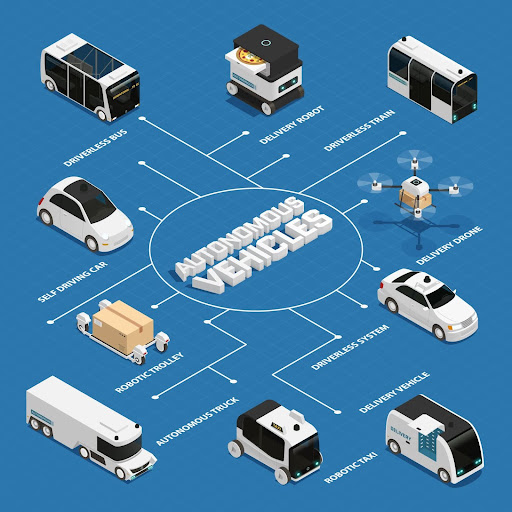Autonomous vehicles (AVs) are at the forefront of AI innovation, promising a future where cars drive themselves, reducing accidents, and making transportation more accessible. However, developing safe and reliable autonomous vehicles requires addressing one of the biggest challenges in AI: detecting and handling edge cases. In the world of autonomous driving, edge cases refer to rare, unpredictable scenarios that fall outside of normal driving conditions, such as unusual road obstacles, unexpected pedestrian behaviors, or complex weather conditions.
This blog will delve into how edge case detection contributes to the safety and reliability of AI in autonomous vehicles, why these rare events are so critical, and the techniques being used to ensure AVs can navigate them effectively.
Understanding Edge Cases in Autonomous Driving
Edge cases in autonomous driving represent rare and unusual situations that standard training data may not fully capture. Examples of edge cases in self-driving environments include:
- Unusual Obstacles: Unexpected objects on the road, like construction equipment, fallen trees, or animals.
- Unpredictable Pedestrian Behavior: Pedestrians crossing suddenly, children playing near the road, or cyclists behaving erratically.
- Challenging Weather Conditions: Heavy rain, fog, or snow obscuring road markings, affecting the vehicle’s ability to detect surroundings accurately.
- Complex Road Configurations: Situations with complex signage, ambiguous lane markings, or unconventional intersections that are not common in regular training datasets.
These edge cases can lead to dangerous situations if not handled correctly by AI models. While edge cases might represent a small fraction of driving situations, their impact on safety is substantial, as a failure to correctly interpret or respond to these scenarios can lead to accidents.
Why Edge Case Detection is Essential for Safer AI in Autonomous Vehicles
In the context of autonomous vehicles, safety is paramount. Here’s why edge case detection is crucial for ensuring the safety and reliability of AI systems in self-driving cars:
- Reducing Accident Risk: Autonomous vehicles must be able to detect and respond to edge cases to prevent potential accidents. By recognizing and training for rare scenarios, self-driving cars are less likely to encounter situations they cannot handle safely.
- Enhancing Model Robustness: Identifying and training for edge cases makes AI models more robust and adaptable. Rather than failing in unexpected situations, a model trained on edge cases can generalize better, enabling safer and smoother operations in diverse environments.
- Building Trust and Public Confidence: Public acceptance of autonomous vehicles depends heavily on their safety track record. Edge case detection helps ensure self-driving cars handle a wide range of real-world conditions reliably, increasing trust among users and regulators.
- Compliance with Safety Regulations: Many countries have stringent regulations for autonomous vehicles, requiring them to demonstrate high safety standards. Addressing edge cases is part of ensuring that these vehicles meet regulatory requirements for deployment on public roads.
How Akridata Detects Edge Cases for Autonomous Driving
We know identifying edge cases is crucial, but how do we find them in a real dataset of videos?
- Data Visualization
- Processing unstructured datasets containing images or recorded videos is incredibly challenging. Clustering the data based on content allows you to identify and focus on relevant scenes, such as: rainy or foggy weather conditions, night vs day, traveling in tunnels etc.
- Akridata offers just that as the first step of data processing – cluster & visualize the dataset, and focus on what matters to you.
- Text based search
- Finding a specific scene or object in a large dataset could take days. However, fusing vision and text models, you can now search in a dataset for any specific item, such as: truck, pedestrian crossing, bridge, etc.
- With Akridata, search through a dataset of tens–of–thousands in seconds for the relevant items, obstacles and scenes. Our preprocessing combines the best in language models and vision models and allows the users to query a dataset based on textual prompts.
- Event Search
- An event is captured when an object is moving through the field–of–view. While relevant events are usually short in time, like: pedestrians crossing, a vehicle changing lanes, driving next to or behind a truck etc, they are too similar to other events, which are contextually very different in terms of direction or objects involved.
- Akridata offers an intuitive approach to select and mark events on short video snippets and then process a full dataset of videos for similar events. These will focus on a combination of objects and direction of motion.
Using a combination of the above techniques, you can search through your archive for specific edge cases related to weather conditions, items on the road, events happening during driving etc.
Once identified, these edge cases can and should be added for training and testing vision models as we aim to have robust systems in autonomous driving vehicles.
Conclusion
Edge case detection plays a pivotal role in making AI-powered autonomous vehicles safer. By identifying and training for rare, high-risk scenarios, AI models in self-driving cars can better handle unexpected events, ultimately reducing accident risk and building public trust in autonomous technology. As edge case detection techniques continue to improve, we can expect self-driving cars to become increasingly reliable, capable of navigating the complexities of real-world environments with greater safety and accuracy.
Akridata offers a variety of solutions for edge case detection that are vital for training the best models and advancing autonomous driving.



No Responses